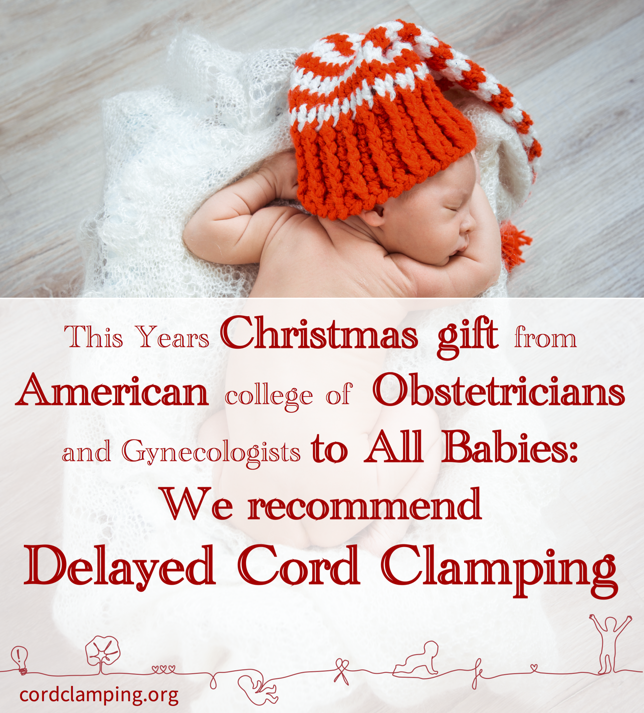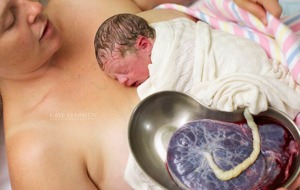2016 > 12
Yesterday, December 21st, ACOG (the American College of Obstetricians and Gynecologists) started to recommend delayed cord clamping (for at least 30-60 seconds). This is an update from their earlier opinion from 2012. As a motive from changing their recommendation for term infants, the committee cites the Cochrane review from 2013, and our study on neurodevelopment published in JAMA Pediatrics 2015. They write: “At 4 years of age, children in the early umbilical cord clamping group had modestly lower scores in social and fine motor domains compared with the delayed umbilical cord clamping group”.
Of course we are very proud to have been able to provide research that has contributed to change the practice of umbilical cord clamping on term infants in US. Still, I believe that 30-60 seconds is too short time to wait, and we will be able to show evidence on this early in 2017.
The committees opinon follows (cited from http://www.acog.org/Resources-And-Publications/Committee-Opinions/Committee-on-Obstetric-Practice/Delayed-Umbilical-Cord-Clamping-After-Birth):
Recommendations
The American College of Obstetricians and Gynecologists’ Committee on Obstetric Practice makes the following recommendations regarding the timing of umbilical cord clamping after birth:
Of course we are very proud to have been able to provide research that has contributed to change the practice of umbilical cord clamping on term infants in US. Still, I believe that 30-60 seconds is too short time to wait, and we will be able to show evidence on this early in 2017.
The committees opinon follows (cited from http://www.acog.org/Resources-And-Publications/Committee-Opinions/Committee-on-Obstetric-Practice/Delayed-Umbilical-Cord-Clamping-After-Birth):
Recommendations
The American College of Obstetricians and Gynecologists’ Committee on Obstetric Practice makes the following recommendations regarding the timing of umbilical cord clamping after birth:
- In term infants, delayed umbilical cord clamping increases hemoglobin levels at birth and improves iron stores in the first several months of life, which may have a favorable effect on developmental outcomes.
- Delayed umbilical cord clamping is associated with significant neonatal benefits in preterm infants, including improved transitional circulation, better establishment of red blood cell volume, decreased need for blood transfusion, and lower incidence of necrotizing enterocolitis and intraventricular hemorrhage.
- Given the benefits to most newborns and concordant with other professional organizations, the American College of Obstetricians and Gynecologists now recommends a delay in umbilical cord clamping in vigorous term and preterm infants for at least 30–60 seconds after birth.
- There is a small increase in the incidence of jaundice that requires phototherapy in term infants undergoing delayed umbilical cord clamping. Consequently, obstetrician–gynecologists and other obstetric care providers adopting delayed umbilical cord clamping in term infants should ensure that mechanisms are in place to monitor and treat neonatal jaundice.
- Delayed umbilical cord clamping does not increase the risk of postpartum hemorrhage.
LATEST POSTS
- Three Reasons To Wait To Clamp The Umbilical Cord
- Midwives in Sweden tends to clamp the umbilical cord in a way that is more natural and practical in…
- New uptodate review on cord clamping
- In memory of Hans Rosling:
- 3 reasons for clamping the umbilical cord after 3 minutes
- 30 seconds might be enough when delaying cord clamping at cesarean sections
- This years christmas gift to all babies
- Major break-through for delayed cord clamping
- 10 years today since this important paper was published
- Podcast about delayed cord clamping.
 0 comments
0 comments 





Israel Brown » Major break-through for delayed cord clamping: ”It is worth taking such a recommendation . However, cord milking in both preterm..”
Dr Robyn Thompson » Major break-through for delayed cord clamping: ”Midwives with women have not been practising early cord clamping for decades tha..”
Sally » Major break-through for delayed cord clamping: ”What's the number of babies needing photo therapy for term babies., talk about i..”
Tonia » Major break-through for delayed cord clamping: ”The picture in this article shows a placenta several minutes after delivery. The..”
Steve Kabamba » Major break-through for delayed cord clamping: ”What is the stand in the High burden HIV population? What is the risk of contrac..”